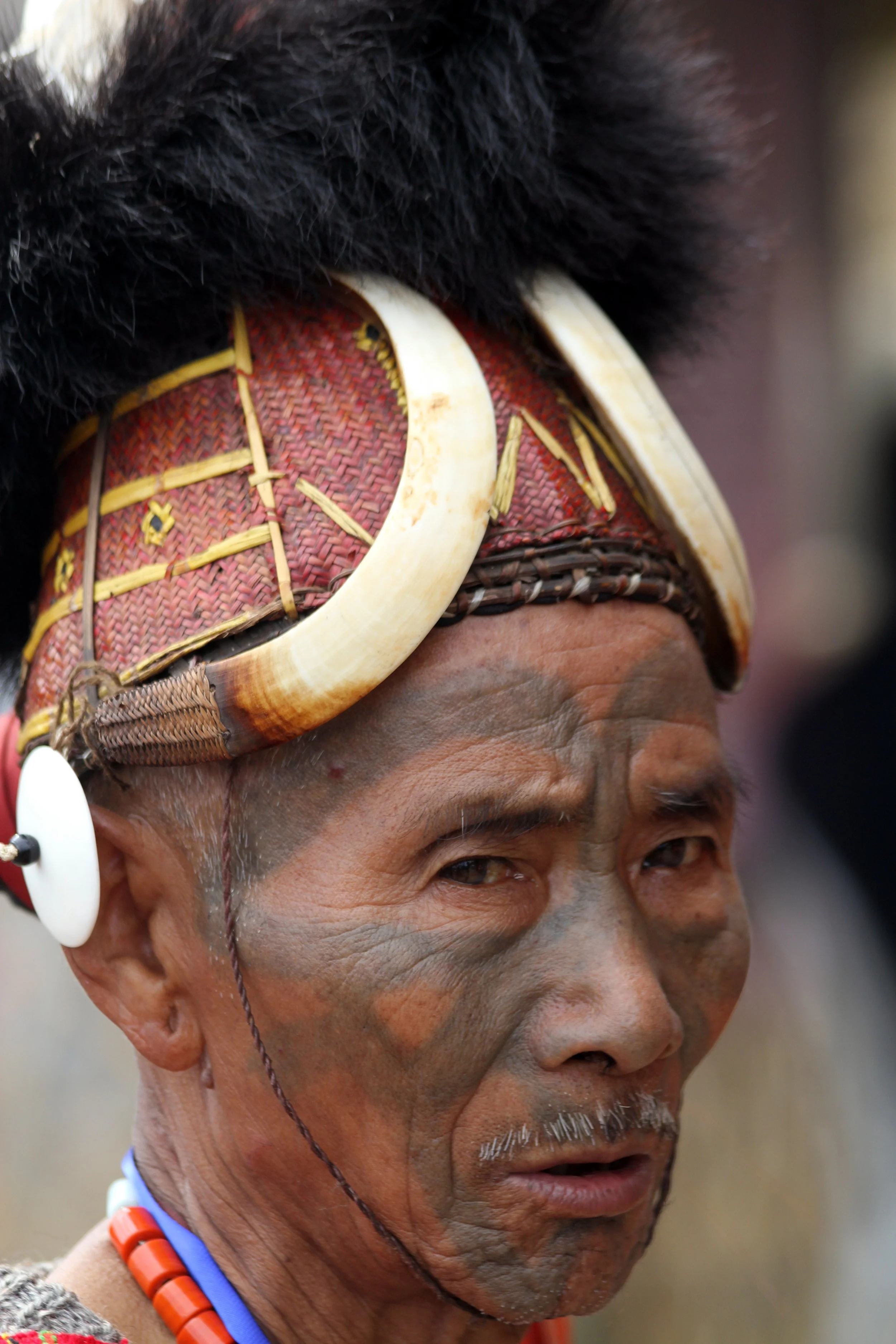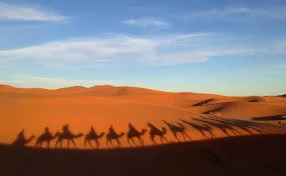North East India, The Land That Time Almost Forgot.
I am standing on the main road that snakes its way, via a series of tight hairpin bends through the city of Kohima, capital of one seven ‘sister states’ of North East India, Nagaland.
Situated as it is, amongst the deep valleys and towering hills of the region, flat terrain here is a luxury and consequently the city literally ‘tumbles’ down the side of a series of steep mountainsides, clinging like a colony of brightly coloured limpets to the rocky terrain on which somehow the residents have carved out a place to live.
Its cold, compelling me to pull my scarf tighter around my neck to ward off the bitterly cold wind that whips down from the high Himalayas. My breath puffs out condensation, the moisture attaching itself to the cindery dust rising from a perilous construction site where workmen somehow find space to construct another dwelling that will perch, anxious cheek by nervous jowl alongside its neighbouring structures.
Huge black clouds collude behind the distant foothills wondering whether to bring freezing rain to the already overcast skies; winter here is not for the feint - hearted.
I am in this part of India to attend the Hornbill Festival, and event held every year in early December when the seventeen indigenous tribes from the various districts of Nagaland descend on the city, proudly wearing their brightly coloured traditional costumes. For a week they will congregate at the Naga heritage Village to sing, dance and showcase a mélange of cultural events, the aim being to revive and protect the rich culture of Nagaland and to display its extravaganza and ancient traditions.
To the uninitiated, (as was I) this area of the vast sub-continent of India is an almost ‘forgotten land.’ The seven ‘sister states, ‘ comprising Arunachal, Assam, Manipur, Meghalaya, Mizoram, Nagaland and the Himalayan State of Tripura appear, when looking at a map, to have been tacked onto its giant neighbour.
The entire region is attached to India by way of a tiny slither of land known as the Silliguri Corridor or Chicken’s Neck that runs through the countries of Bangladesh and Nepal. This fragile umbilical chord runs from West Bengal, and at one point is less than 17 miles (27 km) wide and is the only bridge between the northeastern part of India and the rest of the country. Along its route lies the Chumbi Valley, a dagger-like slice of Tibetan territory that penetrates deep into the corridor.
The whole of N.E India is surrounded by six countries which include, China, Bhutan, Nepal, Myanmar, Tibet and Bangladesh and consequently the thin corridor (and the rest of the region) is heavily patrolled by the Indian Military and in particular the Assam Rifles.
After a few days in Nagaland I got the distinct impression from many of the Nagas I spoke to that they would love to see that torturous umbilical chord, connecting their regions to India severed. Separatism here simmers like a slowly boiling soup over a low flame and a ‘truce’ has been in place for the last sixteen years between the local tribes and the Indian Government.
Having travelled extensively in India that first thing I noticed when arriving here was that it didn’t feel like India at all. For a start the features of the people are more akin to their northern neighbours in that they are shorter and their faces flatter than their counterparts in the south.
These are ‘hill people’ whose short, muscular statures attest to the fact that they spend most of their lives ascending and descending the torturous mountains that surround their habitat.
The Hornbill Festival gives a visitor an opportunity to see these wonderful people ‘up close and personal,’ and for the various tribes to share stories and gossip with their neighbours from across the state. Each of the seventeen tribes will arrive from their various regions and take up residence in a specified area of the Naga Festival site. For the following week one is able to wander freely through their encampments to sample their cuisine, observe their crafts, watch them perform their unique dances and listen to their songs that have been sung since time immemorial.
The costumes worn by both men and women create a riot of colour with their blues, indigoes, oranges and reds providing a welcome relief from the grey winter skies.
One afternoon I am invited to share the warmth of a fire with a group of ageing, small muscular men who huddle around the flames exchanging stories no doubt from long ago. On one I notice a series of tattoos on the knuckles of both hands drawn crudely to resemble the shape of skulls.
A headhunter per chance?
As little as fifty years ago, headhunting was a common practice in this area of the country and was primarily a male activity; women encouraged it as a cultural practice. During those times the men were dispatched neighbouring villages or districts to ‘take heads’ as a prerequisite to marriage. A successful headhunter would, on his return be conferred a right to ornaments and thus a higher status within the community. The practice of head hunting has been banned in India for many years and is no longer practiced among Naga people.
I was rather pleased to hear that!!
My week long sojourn in this part of the world was peppered with days spent roaming the festival site immersing myself as much as I could in the goings on there. At night I wandered the brightly lit streets the shops festooned with Christmas decorations (The prominent religion here is Baptist, proving that the missionaries did their work well!!) The atmosphere is festive, the people warm and friendly and the food simply sublime.
Seven days is all to fleeting a time to get to know an area so vast and altogether complex and so I shall endeavor to return to see what delights the other sisters of the region have to offer.
Paul v Walters is the best selling author of several novels. When not cocooned in sloth and procrastination in his house in Bali he scribbles for several international travel and vox pop journals.
All Photographs copyright Paul v Walters & E.J. Lenahan















